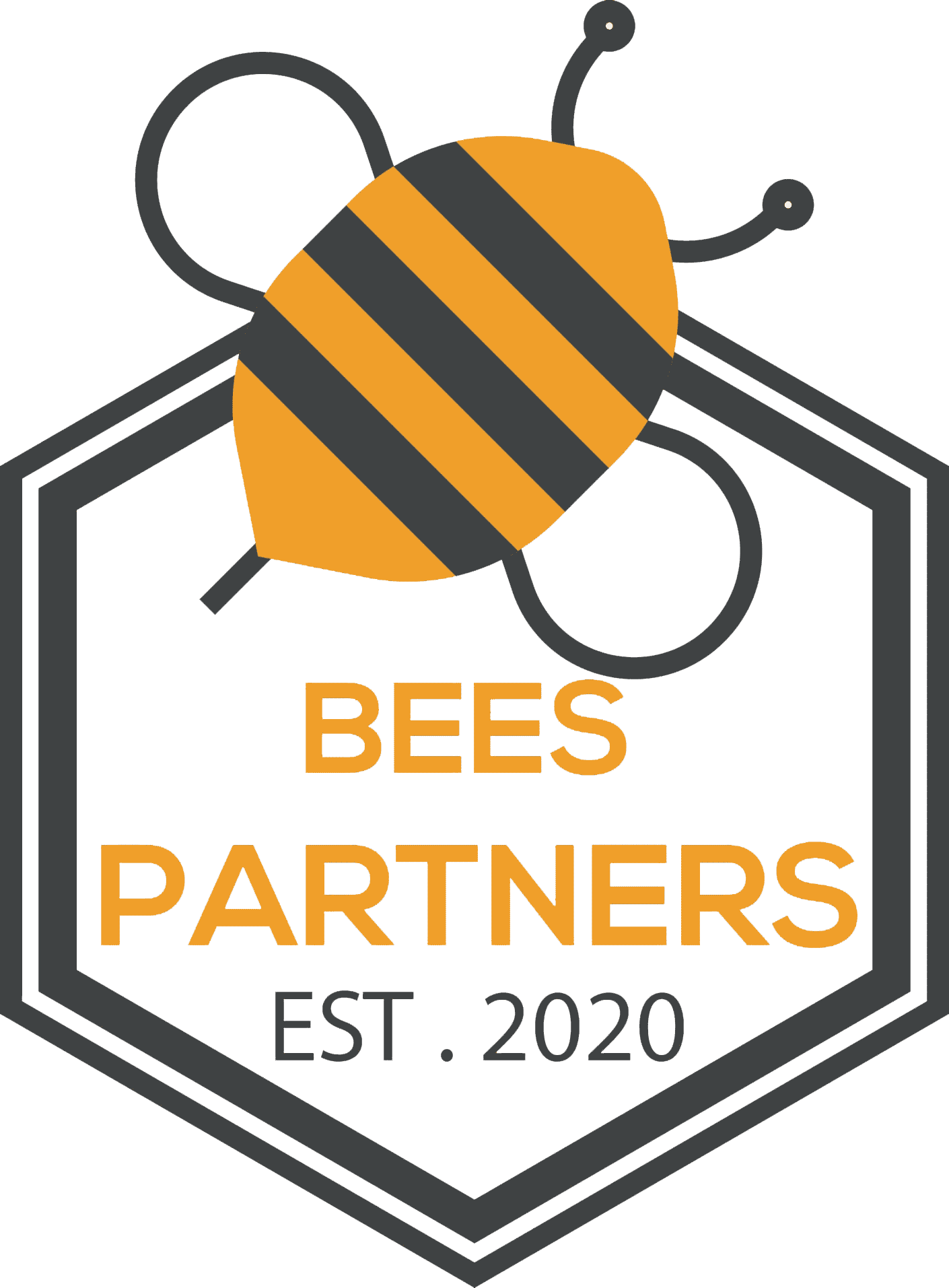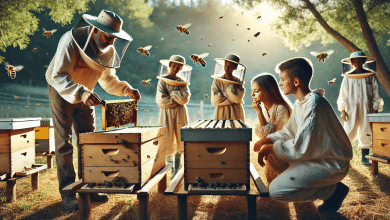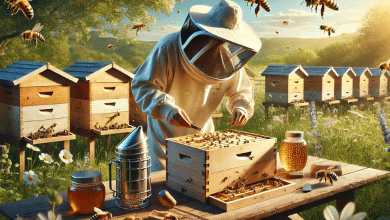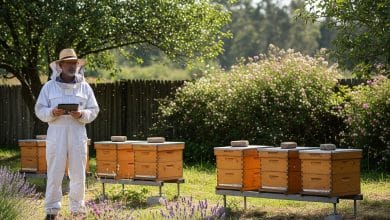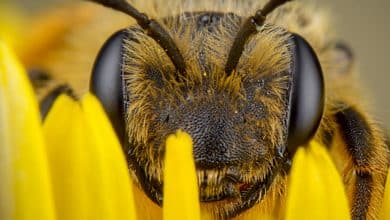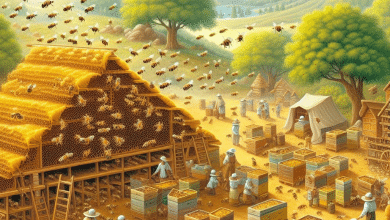How Honey Bee Farming Cost Varies by Region A Comparative Analysis

Honey Bee Farming Cost: Beekeeping, often viewed as a quaint hobby, has transformed into a significant agricultural practice worldwide. This shift is primarily attributed to the rising demand for honey and other bee-related products.
Farmers and hobbyists alike are increasingly aware of the multiple benefits of honey bee farming, not just in terms of financial returns but also for ecological balance. As more individuals consider entering this sweet venture, understanding the costs involved becomes paramount.
The Allure of Beekeeping
The thought of being surrounded by thousands of buzzing bees may seem daunting to some, yet many are drawn to the idea of beekeeping for various reasons:
- Sustainable Living: Many individuals are recognizing the importance of sustainable practices and the integral role bees play in our ecosystem.
- Healthy Products: Honey, beeswax, and propolis are products known for their health benefits and unique flavors.
- Profit Potential: With proper management and understanding of local markets, beekeeping can offer a profitable venture.
An acquaintance of mine, Sarah, a first-time beekeeper in urban Oklahoma, shared her excitement about her journey.
Upon setting up just two hives, she quickly learned about the intricacies of maintaining her colonies and the joy of the first honey harvest. The sweetness of her honey was mixed with sheer satisfaction, reinforcing her choice to pursue this engaging endeavor.
Understanding Costs in Honey Bee Farming
Before diving into beekeeping, aspiring beekeepers must equip themselves with knowledge regarding potential costs. Understanding these can make all the difference between a successful honey operation and a frustrating hobby.
- Initial Setup Costs:
- Hives: Depending on the type of hive system chosen, costs can vary greatly.
- Necessary Equipment: Beekeeping suits, smokers, and extractors can add to initial expenses, but are crucial for hive management.
- Ongoing Operational Costs:
- Labor: Whether it’s your time or the cost of hiring help, labor is a significant factor in determining the financial viability of your operation.
- Maintenance: Regular inspections, treatments for common bee ailments, and general upkeep of equipment must be accounted for.
- Variable Income:
- Honey production can vary based on numerous environmental factors, including weather, floral resources, and regional nectar flow periods. Many new beekeepers may not yield a profitable harvest in their first year due to these variables.
Learning about the financial aspects of beekeeping can set the right expectations and minimize potential losses. Many new beekeepers often overlook the ongoing commitments, which can lead to stress and disappointment when harvest expectations are unmet.
while the initial allure of beekeeping can entice many, it is the comprehensive understanding of profitability and costs that will ultimately pave the way for a successful endeavor. Planning, curiosity, and dedication can transform honey bee farming from a delightful hobby into a rewarding venture.

Contents
- 1 Factors Influencing Honey Bee Farming Cost
- 2 North America: Honey Bee Farming Cost Analysis
- 3 Europe: Honey Bee Farming Cost Analysis
- 4 Asia: Honey Bee Farming Cost Analysis
- 5 Africa: Honey Bee Farming Cost Analysis
- 6 South America: Honey Bee Farming Cost Analysis
- 7 What is the difference between traditional and modern beekeeping?
- 8 What is the impact of beekeeping on household income?
- 9 What is the economic value of the ecosystem services of beekeeping in the Czech Republic?
Factors Influencing Honey Bee Farming Cost
As enticing as the world of honey bee farming can be, aspiring beekeepers should recognize that there are several crucial factors influencing the costs associated with this agricultural venture. Understanding these factors will provide a clearer picture of the investment required, guiding potential beekeepers in their decision-making process.
Equipment and Material Costs
One of the most significant costs in honey bee farming is the equipment and materials necessary to start and maintain hives. While diving into the specifics, here are the primary components to consider:
- Hives: The type of hive system you choose, such as Langstroth, Top-Bar, or Warre, will affect your initial investment. A basic Langstroth hive setup can cost between $200 to $500.
- Protective Gear: Beekeeping suits, gloves, and veils are essential for ensuring safety when dealing with bees. The cost can range from $50 to $200 depending on quality and brand.
- Tools: Essential tools include smokers, hive tools, and uncapping knives. A complete starter kit could total anywhere from $100 to $400.
- Feeding and Medications: To ensure a healthy colony, beekeepers often supplement bee feed and medications. Monthly costs may add up to about $20 to $40, especially in the first year when establishing the hive.
For example, my friend Mark, who started beekeeping last summer, initially underestimated the costs. He set aside $500 believing it would cover everything, only to find himself spending over $800 once he factored in quality gear and supplementary materials.
Labor Costs
Labor costs are another essential aspect to consider. Depending on the scale of operations, these costs can vary significantly:
- Self-Management: Many hobbyist beekeepers manage their hives themselves, which means labor costs are mostly time investment. However, it’s crucial to factor in the opportunity cost of your time.
- Hiring Help: For larger operations, hiring additional help can increase the overall labor expenditures. Agricultural labor typically ranges from $10 to $20 per hour, with seasonal help often needed during peak honey production times.
- Management Techniques: Effective management can greatly influence labor costs. A study from Saudi Arabia found that utilizing a combination of proper bee feeding, medication, and management techniques led to a 72% increase in honey production. This indicates that while you may spend more on inputs like labor, the potential return could be worth the investment.
In considering even small-scale production, adequate labor planning enhances productivity and ensures the well-being of the bees.
New beekeepers like Sarah, who invests regular time observing her hives, are likely to reap the benefits of a higher yield simply through attentive management. To summarize, the costs associated with honey bee farming can be substantial but manageable with careful planning.
Investing in quality equipment and understanding labor dynamics will set beekeepers on a path toward sustainable and profitable honey production. With thorough preparation and awareness of the nuances involved, aspiring beekeepers can navigate the sweet yet complex journey effectively.
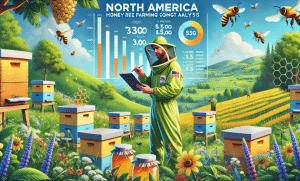
North America: Honey Bee Farming Cost Analysis
Honey bee farming in North America is an essential part of the agricultural landscape, providing a significant source of honey and crucial pollination services.
However, the costs incurred by beekeepers can vary substantially between the United States and Canada, influenced by various factors, including regulations, market demands, and environmental conditions.
United States
In the United States, the beekeeping industry faces unique challenges and opportunities. Recent analysis shows that the market size of the U.S. beekeeping industry is estimated to reach approximately $721.4 million by 2024. However, revenue has experienced a decline, attributed to various factors, including:
- Stiff Competition: Over 60% of domestic demand is met by imports from countries with lower production costs.
- Hive Losses: U.S. beekeepers have reported devastating losses due to colony collapse disorder (CCD), leading to increased operational costs as they scramble to replenish their hives.
Moreover, the average startup costs for a new beekeeper in the U.S. can range from $500 to $2,000, depending on equipment quality and scale. With increases in material costs for hive construction, protective gear, and honey extraction tools, aspiring beekeepers should be prepared for initial investments that may exceed expectations.
For instance, my neighbor Jake decided to take a plunge into beekeeping last year. He invested about $1,200 to set up his first two hives, including purchasing all necessary equipment and gear. Despite his enthusiasm, he faced several challenges adjusting to the unpredictable weather conditions that significantly affected nectar availability and, ultimately, honey production.
In Canada, the honey bee farming landscape presents its own set of dynamics, heavily influenced by provincial regulations and climate factors. The Canadian honey industry emphasizes the importance of quality over quantity, reflected in its average honey prices, which tend to be higher than those in the U.S.
- Startup Costs: New beekeepers in Canada may expect to invest between $1,000 and $2,500 to get started, which includes hives, equipment, and other essentials. The cost can vary based on region and availability of quality materials.
- Pollination Services: Pollination services are incredibly lucrative in Canada, especially in regions like Alberta, where crops such as canola and berries thrive. Beekeepers can charge premium rates for renting their hives for pollination purposes, providing a steady revenue stream.
- Honey Production: Canadian beekeepers generally produce about 40 million pounds of honey annually, with maple and wildflower varieties being popular among consumers.
An example comes from my friend Marie in British Columbia, who has built a successful beekeeping business focusing on organic honey production.
She noted an average of 1,600 pounds of honey harvested per year from her twelve hives, significantly thanks to the premium price she could charge for her high-quality product. In summary, while both the U.S. and Canadian honey bee farming industries face challenges, including competition and climate impacts, they also hold vast potential for profitability.
Beekeepers must adequately assess their initial investment and operational costs to navigate the complexities of this rewarding sector successfully. Whether in the States or Canada, a deep understanding of local markets will help beekeepers thrive in the sweet world of honey production.

Europe: Honey Bee Farming Cost Analysis
In Europe, the honey bee farming sector demonstrates diverse practices and economic landscapes, dependent on local regulations, market conditions, and cultural preferences.
The UK and Germany serve as prime examples, reflecting varying approaches to honey production and the associated operational costs.
United Kingdom
Honey production in the United Kingdom has grown remarkably, with a reported 6,000 registered beekeepers managing around 250,000 bee colonies. While the industry showcases an enthusiastic community of hobbyists, it also faces challenges that influence cost structures:
- Startup Costs: New beekeepers can expect startup costs between £400 and £1,200, which cover beehives, equipment, and protective gear.
- Honey Yield: On average, the yield is around 20 kg per colony per year, depending significantly on weather conditions and flowering times. This fluctuation can influence projected earnings.
A local beekeeper, Claire, shared her journey starting with just two hives. Initially optimistic about her honey yield, she experienced some difficulties due to unexpected weather patterns impacting nectar flows. Her initial harvest was less than anticipated, ultimately leading to a better understanding of the variable nature of the industry.
- Operational Costs:
- Queen bee replacement, medications, and feeding during winter months contribute significantly to ongoing costs.
- Additionally, insurance and local regulations can add compliance costs, with many beekeepers relying on local beekeeping associations for advice and support.
Despite these challenges, UK honey prices have remained stable, thanks in part to consumer demand for local produce. It is not unusual for quality honey from the UK to fetch prices ranging from £5 to £12 per jar, depending on the variety and quality.
Germany
Germany stands as one of Europe’s leading honey producers, with over 100,000 beekeepers managing an estimated 1.2 million colonies. The industry is marked by cooperative structures and a strong awareness of sustainability, which impacts costs:
- Startup Costs: Like the UK, new beekeepers in Germany can expect initial costs between €800 and €1,500. This amount includes hives, tools, and necessary training, with a growing educational sector supporting aspiring beekeepers.
- Honey Production: German beekeepers typically achieve higher yields, averaging around 35 kg per colony annually, attributed to migratory beekeeping practices that optimize honey gathering during different flowering periods across the country.
For instance, Matthias, a beekeeper from Bavaria, engaged in migratory beekeeping, often relocating his hives to capitalize on seasonal blooms. He reported that these practices resulted in a bumper harvest, showcasing the effectiveness of adapting strategies based on local floral availability.
- Costs and Sustainability:
- While producing honey, German beekeepers often face costs related to labor, bee feed, and equipment maintenance, which can amount to about €100 per colony annually.
- However, the major emphasis on sustainability and bee health could lead to additional costs for organic practices or treatment against pests like Varroa mites.
The average honey price in Germany tends to hover around €6 to €8 per kg, with premium products, especially monofloral varieties like honeydew and acacia, fetching higher prices.
In conclusion, beekeeping in the UK and Germany illustrates how varying local conditions, regulations, and market preferences shape operational costs and potential profitability. For aspiring beekeepers, understanding these nuances is crucial for navigating the enchanting yet complex world of honey production.
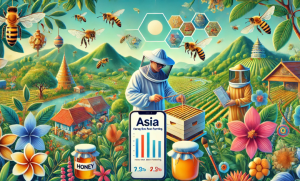
Asia: Honey Bee Farming Cost Analysis
In Asia, honey bee farming presents varied opportunities and challenges, driven by cultural preferences, regional practices, and climate conditions. China and India stand out as two of the largest honey producers on the continent, each with distinct cost structures and market dynamics.
China
China is recognized as one of the world’s leading honey producers, accounting for an impressive 27.42% of global honey production as of 2021. The country’s vast array of flora, combined with extensive beekeeping practices, facilitates high honey yields. However, costs can vary significantly:
- Startup Costs: A beekeeping venture can start for as low as CNY 2,000 (approximately $300) for a basic setup, including a beehive and equipment. But as one scales up, investments can reach CNY 10,000 ($1,500) or more for robust operations.
- Production Costs: Labor costs in China are relatively low. Many small-scale beekeepers utilize family labor or seasonal help, keeping operational costs manageable. However, challenges arise from:
- Disease Management: The Varroa destructor mite is a significant pest impacting honey bee colonies. Beekeepers need to invest in treatments and preventive measures, adding to their operational costs.
- Market Prices: With honey prices fluctuating between CNY 50-100/kg, depending on quality and type (e.g., acacia, wildflower), large producers often focus on specific floral sources to maximize profits.
A local beekeeper, Wu, shared her experience of transitioning from small-scale honey production to commercial beekeeping.
Initially overwhelmed by the technicalities of disease control and hive management, she found her footing through community support and local beekeeping associations. Today, she efficiently manages over 100 hives, producing quality honey that sells readily in urban markets.
India
India’s honey bee farming sector is burgeoning, characterized by a growing demand for organic honey and diverse floral sources. India offers a promising landscape for beekeeping:
- Startup Costs: Starting a beekeeping business in India can require an initial investment as low as ₹20,000 (approximately $250) for basic equipment, with boxes of Indian bees costing around ₹2,000 ($25) each. For those interested in Italian honey bees, costs might be slightly higher.
- Production Costs: Indian beekeeping involves the following cost structures:
- Feed and Medications: Beekeepers generally spend around 10% of their budget on feeding and medicinal treatments. It’s crucial during the lean seasons when natural forage is scarce.
- Labor: Although many beekeepers manage their hives themselves, labor costs can rise as operations scale. Employing seasonal workers may cost an additional ₹500 to ₹1,500/month, depending on local wage rates.
- Market Prices and Sales: Organic honey fetches between ₹400 to ₹700/kg, with increased consumer awareness surrounding health benefits. The exponential growth in demand for organic products has incentivized farmers to diversify their offerings, such as producing beeswax and honey-infused products.
For instance, Ramesh started with just ten hives while balancing his farming job. Over time, his commitment and management skills enabled him to expand to over 50 hives, generating enough income to make beekeeping his primary focus.
Now, he produces a variety of honey products, including a unique Gulkand & Honey mix, capitalizing on the medicinal benefits of both. In summary, honey bee farming in Asia presents a tapestry of opportunities shaped by local conditions, knowledge, and practices.
As beekeepers in China and India navigate the complexities of their industries, they display resilience and innovation, ultimately contributing to the thriving global honey market.

Africa: Honey Bee Farming Cost Analysis
In Africa, honey bee farming is not only a significant economic activity but also a vital contributor to food security and biodiversity.
Two nations that exemplify diverse practices and promising prospects in honey production are Kenya and South Africa. Both have unique cost structures and market dynamics, reflecting their agricultural landscapes and beekeeping cultures.
Kenya
Kenya is known for its vibrant beekeeping culture, with over 1 million beekeepers estimated to manage about 2 million hives across the country. The rich biodiversity provides enriching sources of nectar, making honey production a lucrative venture.
- Startup Costs: Aspiring beekeepers can start their journey with an initial investment of as low as KSh 20,000 (approximately $180). This covers basic equipment, such as a beehive, protective gear, and tools needed for honey extraction.
- Operational Costs: While many beekeepers may manage their hives alone, operational costs can arise from:
- Beekeeping Equipment: An investment of around KSh 10,000 – KSh 15,000 ($90 – $135) is required for high-quality bee suits, smokers, and honey extractors.
- Labor Costs: Those employing seasonal labor during harvest times can expect to pay KSh 300 – KSh 500 ($3 – $4.50) per day, a reasonable cost given the rising demand for honey.
- Market Prices: Kenyan honey prices range from KSh 200 to KSh 600 ($1.80 – $5.50) per kilogram, depending on the type and quality of honey, with organic and specialty varieties fetching higher rates.
A local beekeeper, Amani, shared his journey of starting with a simple hive inherited from his father. Initially, he struggled to understand bee behavior and the complexities of honey extraction.
However, his patience paid off, and now he successfully manages around 30 hives, producing kilograms of honey prescribed for export, significantly enhancing his income.
South Africa
In South Africa, honey production has a rich history and is an integral part of rural economies. The country boasts diverse floral species, allowing beekeepers to produce various types of honey.
- Startup Costs: Beekeeping in South Africa requires a more significant investment of approximately ZAR 5,000 – ZAR 10,000 ($330 – $660) for starting equipment, which includes beehives, protective clothing, and necessary tools.
- Operational Costs:
- Labor: Depending on whether they hire seasonal workers or employ family members, beekeepers can expect to spend ZAR 1,500 ($100) monthly on labor.
- Maintenance: Ongoing costs for maintenance, including medications to treat bee diseases, can add another ZAR 2,000 ($130) annually to a beekeeper’s budget.
- Market Prices: South African honey is popular domestically and in export markets, with prices ranging from ZAR 80 – ZAR 150 ($5.50 – $10.00) per kilogram, particularly for raw and organic honey varieties.
A South African beekeeper, Thandi, shared her experience transitioning from hobbyist to commercial beekeeper. After investing in education and equipment, she now operates 50 hives.
Her specialization in fynbos honey—a unique floral source native to South Africa—has allowed her to attract premium prices while contributing to local biodiversity preservation.
honey bee farming in Africa, particularly in Kenya and South Africa, showcases the potential for profitability through commitment and knowledge.
While each country presents its unique challenges and operational costs, the joys of managing hives and the benefits of producing honey resonate deeply with individuals invested in sustainable agriculture and improving their communities.
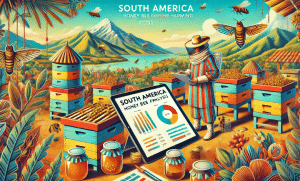
South America: Honey Bee Farming Cost Analysis
The honey bee farming sector in South America is characterized by diverse flora, climate conditions, and agricultural practices.
Brazil and Argentina stand as the two key players in the region, showcasing unique cost structures and market dynamics inherent to their local environments.
Brazil
Brazil is one of the largest honey producers in the world, known for its high-quality honey varieties derived from its rich biodiversity. With more than 300,000 beekeepers tending to over 5 million hives, honey production is not only an important industry but also a key part of local culture.
- Startup Costs: Aspiring beekeepers can embark on this venture for as little as R$ 1,000 ($200), which covers basic beekeeping equipment including hives, protective gear, and extraction tools.
- Operational Costs: The average operational costs can hover around R$ 2,000 – R$ 5,000 ($400 – $1,000)annually, encompassing:
- Feeding and Medications: Beekeepers typically allocate about 10-15% of their budget for bee feed and medications, especially during seasons when natural forage is limited.
- Labor: Many beekeepers manage their hives alone or with family help; however, hiring seasonal workers during harvest can cost around R$ 80 – R$ 120 ($15 – $25) per day.
- Market Prices: Brazilian honey prices range from R$ 15 to R$ 50 ($3 to $10) per kilogram. Varieties like native Brazilian floral honey are particularly sought after internationally, contributing to export opportunities.
My friend Carlos, who runs a beekeeping operation in Minas Gerais, started with just ten hives a few years back. Now, he has expanded to over 50 hives, allowing him to meet local market demand while also exploring export opportunities.
Carlos emphasizes the need for sustainable practices, highlighting the integration of natural foraging alternatives into his operations.
Argentina
Argentina is renowned for its high-quality honey, particularly multi-flora and wildflower varieties. As one of the world’s top honey exporters, the country has about 70,000 beekeepers managing approximately 3 million hives.
- Startup Costs: Initial investment in Argentina can range from ARS 10,000 to ARS 30,000 ($100 to $300), depending on the quality of materials and the scale of operations.
- Operational Costs:
- Labor Costs: Seasonal labor is common, especially during the honey harvest, with costs averaging around ARS 1,500 ($15) per day. Many beekeepers rely on family members to assist with hive maintenance and honey extraction.
- Feeding and Treatment: Budgeting for bee feed, medications, and seasonal management can contribute about 30% of total operational expenses on average.
- Market Prices: The price of honey in Argentina varies, but premium honey can go for about ARS 250 to ARS 700 ($2.50 to $7) per kilogram, making it a competitive product in the global market.
Sofia, a beekeeper in Patagonia, shared her experiences transitioning from part-time to full-time beekeeping. She discovered that focusing on high-quality honey production allowed her to access new markets.
By connecting directly with local consumers and attending farmers’ markets, she quickly built a loyal customer base, further enhancing her profit margins. In conclusion, honey bee farming in South America, particularly in Brazil and Argentina, presents numerous opportunities for profitability and sustainability.
Aspiring beekeepers in these regions should remain cognizant of the initial and operational costs while leveraging their unique local products to thrive within both domestic and international markets. As the demand for natural, high-quality honey continues to rise, the potential for success in these vibrant beekeeping cultures only grows.
What is the difference between traditional and modern beekeeping?
Beekeeping, an ancient practice, has adapted over the years, leading to the emergence of two distinct methods: traditional and modern beekeeping. Each approach has its own set of practices, philosophies, and benefits, tailored to meet the goals of the beekeeper.
Differences Between Traditional and Modern Beekeeping
- Equipment:
- Traditional Beekeeping: Often relies on handcrafted hives made from natural materials like bamboo, mud, or logs. Traditional practices focus on the natural behaviors of bees and less on maximizing honey production.
- Modern Beekeeping: Involves standardized equipment, such as Langstroth or Top-Bar hives, designed for efficiency. Beekeepers utilize advanced tools like honey extractors, hive monitoring systems, and protective gear to manage bee colonies and harvest honey more safely.
- Management Practices:
- Traditional Beekeeping: Typically adheres to age-old methods passed down through generations. The processes emphasize minimal intervention, allowing bees to thrive in their natural setting.
- Modern Beekeeping: Emphasizes scientific approaches. Beekeepers may closely monitor hive conditions, implement breeding programs for disease resistance, and utilize medications to manage pests like Varroa mites. This method often aims to maximize honey production through better management techniques.
- Profitability:
- Traditional Beekeeping: While it can yield honey and other bee products, it may not always be as profitable due to less production-focused practices.
- Modern Beekeeping: Offers greater potential for profit, with structured management allowing for larger honey yields and the production of diverse bee-related products like beeswax, propolis, and royal jelly.
In my conversations with local beekeepers, I found that many traditional beekeepers, while passionate about their craft, often supplement their income with other agricultural activities.
They cherish the role of bees in their local ecosystems but acknowledge that honey production is not their primary revenue stream.
Is Bee Farming Profitable in South Africa?
South Africa has a vibrant beekeeping industry, with a growing awareness of the economic value of honey production and pollination services. Bee farming can indeed be profitable under the right conditions due to several factors:
Market Demand: The local and international demand for honey is on the rise, especially for organic and high-quality products. Beekeepers can sell honey in various markets, from wholesalers to farmers’ markets, at prices ranging from **ZAR 150 to ZAR 300 ($10 to $20)** per kilogram, depending on the quality and type.
Diverse Floral Resources: With varying ecosystems, South African beekeepers have access to different floral sources. This variety contributes to unique honey flavors that appeal to consumers.
Value-Added Products: Beyond honey, the production of beeswax candles, beauty products, and health supplements can enhance profitability. Diversifying product offerings can lead to additional income streams.
Government Support: The South African government provides support through training programs and grants for developing sustainable practices which can lower startup costs and operational expenses. A local beekeeper, Sipho, shared his experience of starting his honey business in the Free State.
With only 20 hives, he initially focused on organic honey production. After two seasons, he expanded his operation by investing in training and diversifying into beeswax products.
Today, he finds himself not only thriving financially but also contributing positively to the local ecosystem. In summary, the profitability of bee farming in South Africa is contingent on several dynamic factors, including effective management practices, market accessibility, and local flora diversity.
The shift from traditional to modern beekeeping continues to empower local beekeepers to adapt and grow, ensuring this ancient practice remains viable and sustainable.
What is the impact of beekeeping on household income?
Beekeeping has long been recognized as a crucial livelihood diversification strategy for rural households across the globe.
In Ethiopia, a country with a rich agricultural heritage and diverse flora, beekeeping stands out as a sustainable practice that not only boosts household income but also contributes to environmental conservation.
Economic Contribution of Beekeeping
Recent studies from northwestern Ethiopia reveal that participation in beekeeping is linked to significant increases in household income. The findings indicate that households engaged in beekeeping experience an average income increase of 3,418 Ethiopian Birr (ETB) per person, which translates to about a 51% rise in income compared to non-beekeeping households. This enhancement in financial stability can be attributed to several factors:
- Honey Sales: The sale of honey provides a direct source of income. Average yields from traditional beehives can reach around 15-25 kg per hive per season, and with honey prices fluctuating, this can be a lucrative business.
- Pollination Services: Beyond honey production, beekeepers contribute to the pollination of various crops. This service enhances agricultural productivity, indirectly benefiting farmers who may hire beekeepers to improve their yields.
- Value-Added Products: Many beekeepers also produce beeswax, propolis, and royal jelly, thereby diversifying their income streams and increasing profits.
My neighbor, Abebe, is a prime example of how beekeeping can transform household income. Initially, he worked as a farmer, but after adopting beekeeping practices, he saw his income multiply.
He employs about six hives now, producing honey that he sells at local markets. Abebe often notes that the additional income from his honey has allowed him to reinvest in his farm and educate his children.
Factors Influencing Profitability
The profitability associated with beekeeping in Ethiopia is influenced by various factors:
- Access to Training and Resources: Households that have access to agricultural extension services and training programs are more likely to adopt effective beekeeping practices, leading to increased honey production and income.
- Socio-Demographic Characteristics: Studies indicated that factors such as the age, education level, and marital status of the household head positively correlate with the likelihood of engaging in beekeeping. For instance, younger, educated individuals tend to embrace new technologies and practices, thereby boosting their productivity and profits.
- Market Accessibility: Beekeepers who can access markets easily often achieve better sales prices for their honey. Establishing cooperatives or engaging in local farmers’ markets can enhance income opportunities.
- Technological Advancements: The adoption of improved beehive technologies has shown to increase honey yields significantly. Households utilizing modern techniques reported producing an average of 7.3 kg more per hive compared to those using traditional hives.
beekeeping in northwestern Ethiopia demonstrates a profound impact on household income, providing financial opportunities for many rural families. Through effective management practices, supportive resources, and market access, beekeeping can be a sustainable and profitable venture.
As communities continue to recognize the value of bees, both in terms of income and environmental benefits, the tradition of beekeeping is set to flourish, uplifting rural livelihoods and contributing to the local economy.
What is the economic value of the ecosystem services of beekeeping in the Czech Republic?
Beekeeping in the Czech Republic is not just about producing honey; it plays a vital role in the ecosystem through its contributions to pollination, biodiversity, and various economic enterprises.
Recent studies have highlighted the considerable ecosystem services provided by beekeeping, offering insights into their value and importance for both agriculture and the economy.
Understanding Ecosystem Services in Beekeeping
Ecosystem services in beekeeping can be categorized into several key areas, with distinct economic implications for rural communities and the broader environment:
- Pollination Services: One of the primary benefits of beekeeping is the pollination of cultivated plants. This service directly affects agricultural productivity. In the Czech Republic, the pollination of crops significantly enhances yields, and it has been shown that the increased density and diversity of bee populations can contribute to an average 24% increase in crop productivity.
- Production of Honey and Other Products: Although honey and other bee products represent only 10% of the benefits provided by honeybees, they are crucial for beekeepers. The value of honey production alone in the Czech Republic is substantial, contributing to the nation’s agricultural economy.
- Cultural and Educational Services: Beekeeping also fosters community engagement and provides educational opportunities related to environmental awareness and sustainability. Many local beekeeping associations promote api-tourism, enhancing the cultural value of beekeeping in rural areas.
In a recent visit to a local apiary during a beekeeping seminar, I learned firsthand about these ecosystem services. The beekeeper, Mr. Novák, shared how his passion for beekeeping extended beyond honey-making.
He actively participates in educational initiatives, teaching local children about the importance of bees in maintaining ecosystem health. His outreach efforts not only promote sustainable practices but also create a sense of community among local residents.
Quantifying Economic Value
Recent research has endeavored to quantify the economic value of these ecosystem services. The total value of ecosystem services from beekeeping in the Czech Republic is estimated to be around 3,646,368 CZK. This underscores the importance of beekeeping as a contributor to rural economies and agricultural productivity.
- Pollination: Valued at approximately 896,584 CZK, pollination services are essential for maximizing crop yields and maintaining biodiversity.
- Honey Production: The monetary value derived from honey and other products shows a significant contribution to the income of rural households, allowing beekeepers to sustain their livelihoods.
- Cultural Significance: The opportunity for api-tourism and the promotion of local markets for honey product sales further extends the economic impact of beekeeping practices.
the ecosystem services provided by beekeeping in the Czech Republic are not only economically valuable but also integral to sustaining biodiversity and enhancing agricultural productivity.
As the awareness of these benefits continues to grow, support from local governments and the community at large will be essential in ensuring the long-term viability and sustainability of beekeeping practices.
Beekeepers hold the key to not only producing honey but also preserving the delicate balance of our ecosystem, illuminating the inseparable connection between nature and economic prosperity.
That brings us to the end of our comparative analysis on how Honey Bee Farming Cost vary by region. I hope you found this information insightful and that it helps you navigate the unique financial landscape of beekeeping.
Remember, understanding these cost dynamics is essential for effective budgeting and successful honey production. I’d love to hear your thoughts what regional factors have you experienced that impacted your beekeeping costs the most? Let’s start a conversation in the comments below!
Important Notice on Content Rights
All rights reserved to Bees Partners © 2025. Copying, republishing, translating, or quoting more than 10% of this content is prohibited without prior written permission. For commercial or academic use, please contact: info@beespartners.dk.
Note: Limited quotation is allowed with clear source attribution and a direct link to the original article.
